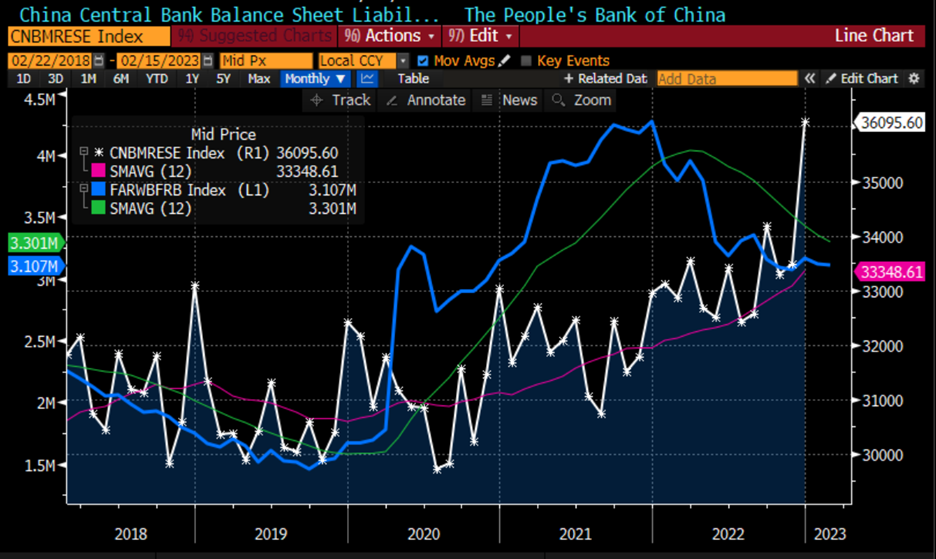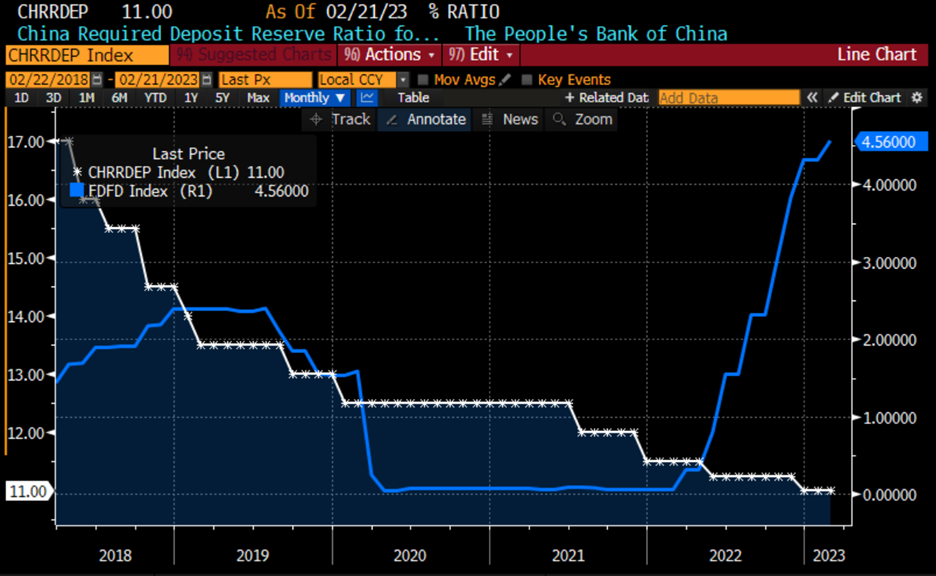China Zigs While The G7 Zags

Image Source: Pexels
By: Steve Sosnick Chief Strategist
While investors have been fretting about rate hikes and quantitative tightening among the G7 central banks, one of the most important has been moving in the opposite direction. The Peoples Bank of China (PBOC) has been aggressively accommodative, which complicates the inflation-fighting efforts by the Fed and its peers.
While the PBOC’s different tack might be frustrating to its peers, for most of this century China had helped the central banks immensely. China’s growth during the post-GFC period meant that the G7 banks’ response to the crisis didn’t have to be even more aggressive than they were at the time. Perhaps more importantly, globalization – or more specifically, China outsourcing – kept inflation under check for quite some time. “Lower for longer” was enabled only because we were in an extended period of modest inflation abetted by business’ ability to source goods and labor in China.
It seems quite clear that the latest bout of accommodation was spurred by the China’s move away from its zero-Covid policy. The liabilities on the PBOC’s balance sheet had been generally growing throughout 2022 even as quantitative tightening took root in the US. Yet we saw a spike of over 8% in December. On an absolute basis, this was the largest jump in the last five years, though it was exceeded on a percentage basis in December 2018. It is probably not a coincidence that a brief bear market in US equities ended around that time.
5-Year Monthly Data, PBOC Balance Sheet Liabilities (white, right scale), Federal Reserve Balances (blue, left scale), with 12-Month Moving Averages (magenta, green)

Source: Bloomberg
The balance sheets are not the only measure of monetary accommodation that are moving in opposite directions. The PBOC’s preferred monetary policy tool is modifying the reserve requirement at major banks. It is not a perfect match for Fed Funds rates, but a lower reserve requirement represents an analogous policy to a lower funds rate, and vice versa. China had been steadily ratcheting down the requirement from 17% to 12% prior to Covid and continued to adjust it lower in recent years even after the Fed began to hike rates. It is notable that the PBOC reduced requirements once again in December, going from 11.25% to 11%.
5-Year Monthly Data, China Required Deposit Reserve Ratio (white, left), Fed Funds Rate (blue, right)

Source: Bloomberg
One effect of Chinese monetary stimulus is an increased demand for commodities. Easier monetary conditions could help to reinvigorate China’s relatively moribund real estate market, which in turn would increase demand for key commodities like iron and copper. Speculators seems to expect this, with Dalian Iron Ore Futures trading steadily higher after a collapse in October when zero-Covid stresses came to a head. Much of the rally occurred even as the Remninbi appreciated, though the latest leg is being accompanied by a modest pullback in the currency. Remember that commodities are globally traded, so a push in one major economy will be felt across the globe.
1-Year Daily Data, Dalian Iron Ore Futures (rolling front contract, white, left) and 30-Day Moving Average (green) vs Remninbi Spot (blue, right)

Source: Bloomberg One of the supposed benefits of international diversification is decorrelation. In theory, assets in different countries should move at different rates and even in different directions. In the reality of today’s central bank-driven markets, we see all too many asset classes and regions moving in concert. A counter-cyclical China should be a benefit, not a problem. But with most major economies battling inflation at the same time that globalization seems to have peaked, if not begun to reverse, an accommodative PBOC could prove quite problematic for the Fed
More By This Author:
The Games Haven’t Changed, The Casino Opened More TablesStocks As An Inflation Hedge
Um, About That Disinflation…
Disclosure: The analysis in this material is provided for information only and is not and should not be construed as an offer to sell or the solicitation of an offer to buy any security. To the ...
more


